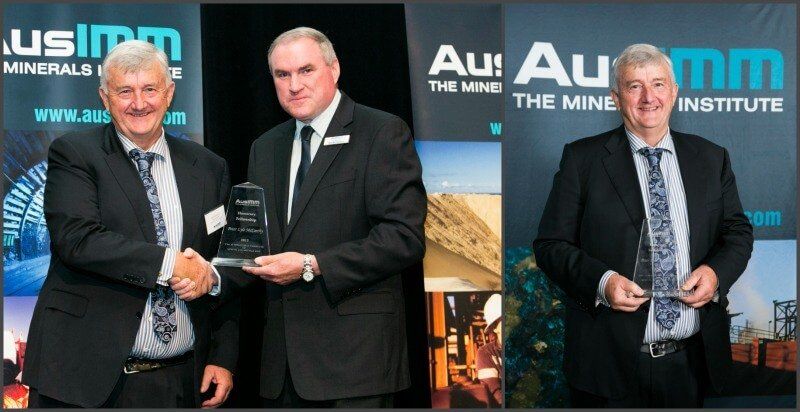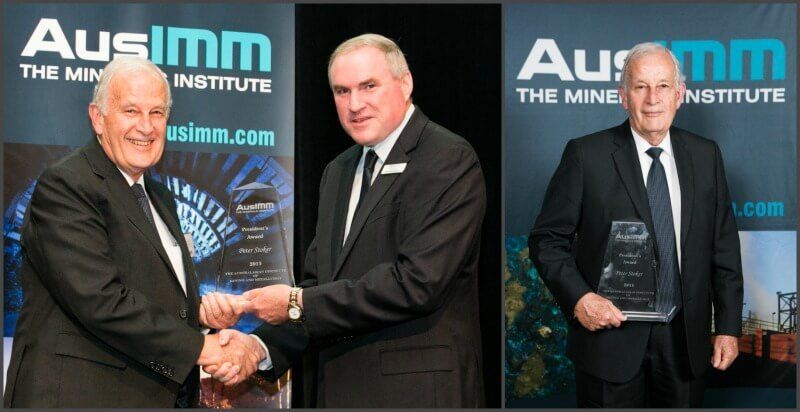Editorial May 2018
AMC has always supported its regional professional institutes and has encouraged staff to participate in their activities. With The Australasian Institute of Mining and Metallurgy (AusIMM) celebrating its 125th year in 2018, it is a good time to reflect on the history of our professional bodies.
The American Institute of Mining, Metallurgical, and Petroleum Engineers (AIME) was founded in 1871 in Wilkes-Barre, Pennsylvania and today has over 145,000 members worldwide. It is the original parent organization of the Society for Mining, Metallurgy, and Exploration (SME), The Minerals, Metals & Materials Society (TMS), the Association for Iron and Steel Technology (AIST), and the Society of Petroleum Engineers. AIME members provided valuable advice to their Australian colleagues when the AusIMM was established in 1893.
Several organizations in the British coal industry formed The Institution of Mining Engineers (IMinE) in 1889. Similarly, earlier groups in hard rock mining merged to form The Institution of Mining and Metallurgy (IMM) in 1892.The IMinE absorbed the National Association of Colliery Managers (1968) and The Institution of Mining Electrical and Mining Mechanical Engineers (1995), before itself being absorbed into the IMM in 1998. The Institute of Materials, Minerals and Mining (IOM3) was formed from the merger of the Institute of Materials (IoM) and IMM in 2002, today having over 18,000 members. IOM3 today spans a broad spectrum of materials and covers all aspects of materials production, processing, design and end use.
The AusIMM was founded as the Australasian Institute of Mining Engineers in 1893 by a meeting of mine managers in Adelaide, South Australia. New Zealand members were admitted in 1900 and Metallurgy was added to the name in 1919, reflecting the large number of metallurgist members. Today it has more than 13,500 members drawn from all sections of the industry and supported by a network of branches and societies in Australasia and internationally.
In 1894 the Chemical and Metallurgical Society of South Africa was started. It became the Chemical Metallurgical and Mining Society of South Africa in 1904, then in 1956 it became the South African Institute of Mining and Metallurgy. In 2006 the name was again changed to The Southern African Institute of Mining and Metallurgy (SAIMM) to reflect the representation of the SAIMM branches in neighbouring Namibia, Zambia and Zimbabwe.
The Canadian Mining Institute was founded in Montreal in 1898. Metallurgy was added to the name in 1920 and it became known by the abbreviation CIM in 1942. It became the Canadian Institute of Mining, Metallurgy and Petroleum in 1990. CIM has grown from a small association to Canada’s leading professional association for the minerals related industries, with technical societies and over 30 local Branches across Canada and one overseas.
There are many other professional bodies, but these are the principal ones in the English-speaking world. Of these, the AusIMM remains the most specialized. The USA includes materials and petroleum, while Canada includes petroleum in its remit. In the UK materials dominate a greatly reduced mining membership. In Australia, Engineers Australia is the home for most non-mining engineers and there are two bodies competing for geologists as members. Despite this, geologists comprise a large membership within AusIMM.
It is interesting that apart from AIME, these bodies all formed in the decade from 1890. It was a period of great innovation, with steam giving way to electric power and cyanidation being applied to challenging gold processing. Problems with lung disease and treatment of sulphide ores had emerged and demanded research. Economies of scale were beginning to be appreciated, particularly in open pit mining. Stamp mills were being replaced by crushing and grinding. Professional training in Schools of Mines and universities was producing recruits for the new institutes. The day of the Cornish Captains had passed.
Research and education arranged through the new institutes was to set the industry up for success in the 20th Century. Those institutes generally kept pace with the need to organize conferences, publish papers and technical articles, and provide a social network for industry professionals. Today we have a different type of social network at our fingertips. Publication of technical articles happens instantly and is widely accessible. Conferences are still attractive, providing some welcome human interaction in an increasingly on-line world.
What strategy should a professional institute adopt to remain relevant today? It is a question that challenges the volunteer directors, committees and full-time staff. Get it wrong, and the coming generation of professionals will not see a benefit in membership. Get it right, and membership will continue to reflect the numbers employed in mining and related fields, including IT and technology areas that are under-represented today.
Consultancies like AMC must change with the times too, reflecting the make-up of professional skills being applied in the industry. We pay close attention to what the professional bodies are doing and where they are heading. It is also good to know where we have come from.
Subscribe for the latest news & events
Contact Details
Useful Links
News & Insights



